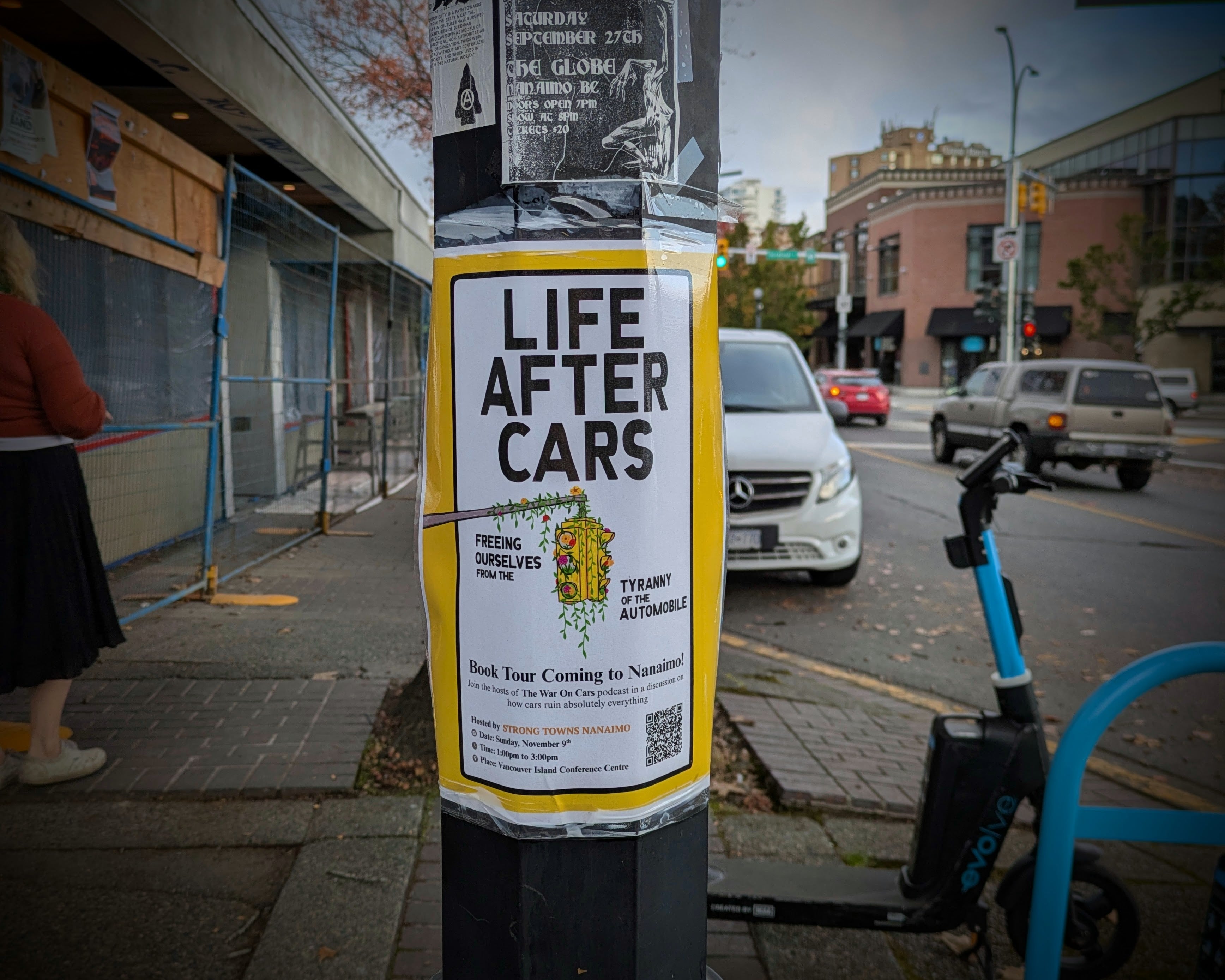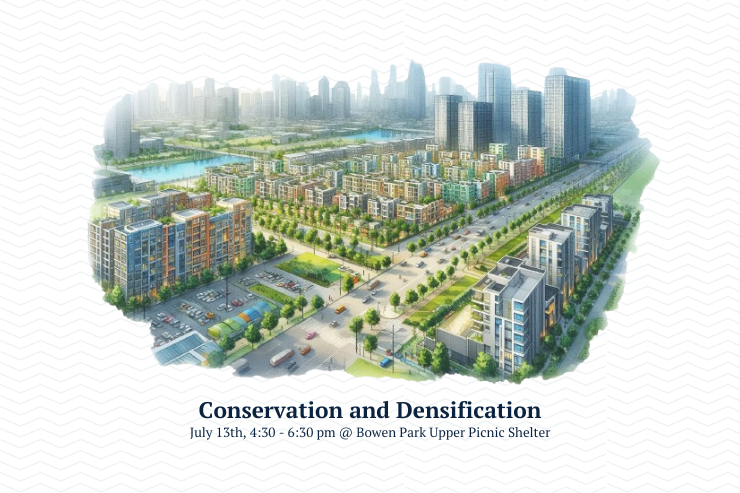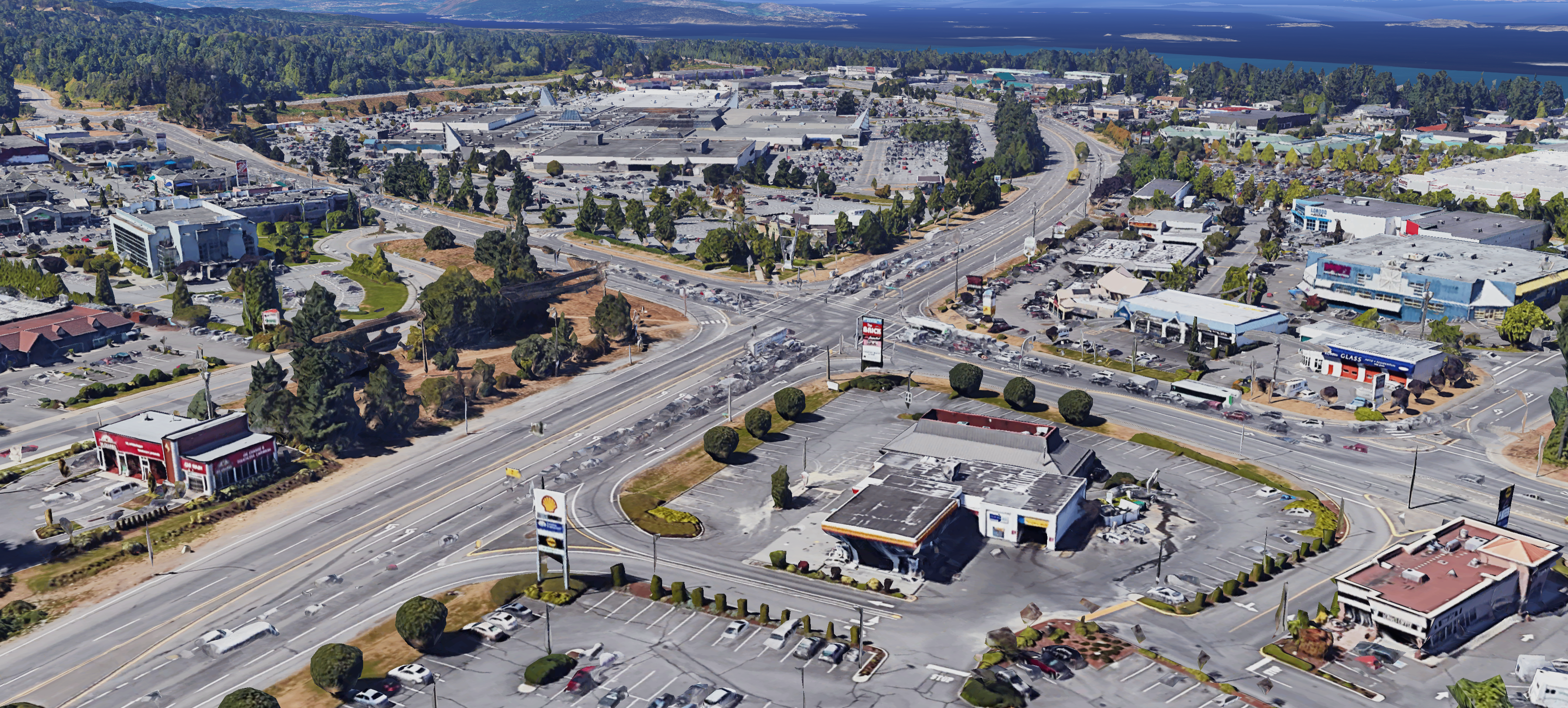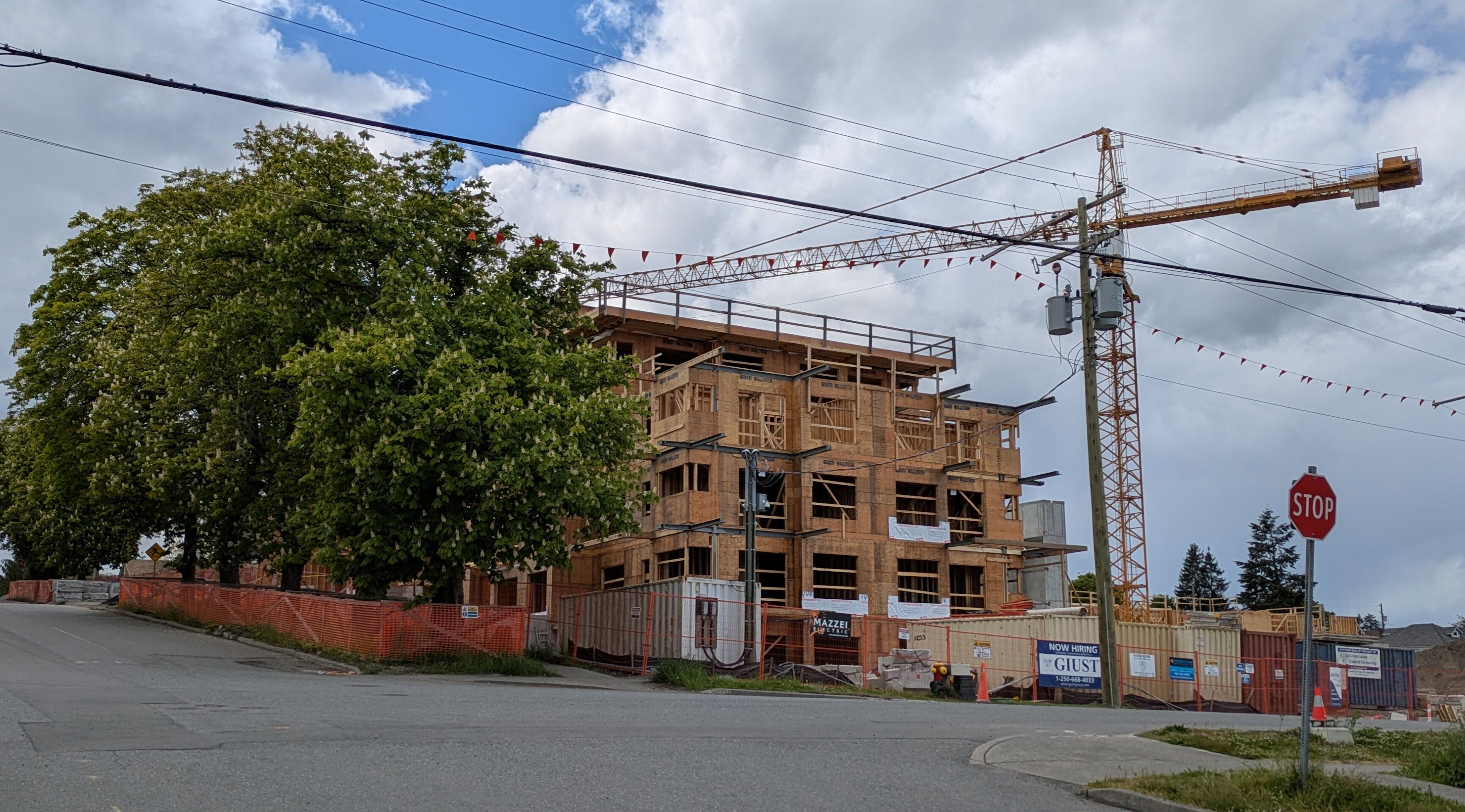Opal Road, a short, winding residential road nestled between Uplands Drive and Rock City Road in Nanaimo, BC, is more than just a quaint neighborhood lane; it’s a cautionary tale on the pitfalls of isolated infrastructural interventions. Over a span of three tumultuous years, this small street became the epicenter of a heated debate, with traffic calming measures installed, then ultimately removed, all in response to mounting resident outrage. At its core, the controversy regarding Opal Road revolves around how it serves as a shortcut for commuters traveling from the Rock City area toward Rutherford, significantly increasing traffic flow during peak times through an otherwise peaceful community.
 Opal Road’s traffic diverter before it was removed. (Nanaimo News Bulletin)
Opal Road’s traffic diverter before it was removed. (Nanaimo News Bulletin)
In response to the escalating concerns, the City of Nanaimo attempted to curb the problem in 2019 by installing what they termed a “traffic calming diverter.1” This traffic island was designed to prevent commuters from using Opal Road as a throughway between the two regions. The goal was simple: reduce speeding and discourage through traffic. But what unfolded next revealed a deeper, more systemic issue.
 Alternate angle of the Opal Road traffic diverter before it was removed. (Nanaimo News Bulletin)
Alternate angle of the Opal Road traffic diverter before it was removed. (Nanaimo News Bulletin)
The Diverter That Sparked a Controversy: Installed in 2019 and later removed, this traffic diverter on Opal Road was intended to curb through traffic but instead became a source of community frustration2. Image courtesy of Nanaimo News Bulletin. Though the number of cars taking the shortcut was reduced by 53%, the results were far from satisfactory. The average speed on the street remained virtually unchanged, hovering just over 40 km/hr — a critical figure when addressing pedestrian safety. Moreover, commuters undeterred by the traffic island resorted to making illegal left turns onto Rock City Road, creating new hazards.
 Map of the Opal Road area showing the location of the traffic diverter and the surrounding streets. (City of Nanaimo)
Map of the Opal Road area showing the location of the traffic diverter and the surrounding streets. (City of Nanaimo)
Councilor Erin Hemmens, after observing the intersection with residents, noted the severity of the situation: “More than half of the cars made an illegal turn, there was a bumper on the median that had been there for weeks, a truck passed and hit the stop sign,” she shared at a council meeting. Former Councilor Zeni Maartman echoed these concerns, highlighting the tangible dangers and growing discomfort among residents: “From all we’ve heard from the residents, from what we see on social media and bumpers falling off from the way they’re hitting and the illegal turns, I’m just extremely uncomfortable with the way it is right now.” The installation of the diverter not only failed to achieve its intended goals but also spawned new problems, sparking frustration within the community and leading to dangerous driving behaviors. Several letters to the editor from residents of the area voiced strong condemnation of the new traffic measure.
The Flaw Of Isolated Infrastructure
Opal Road’s experience highlights a critical flaw in many urban planning interventions: isolated infrastructure changes can lead to more harm than good. The diverter, rather than solving the problem, created inconvenience and new dangers for both residents and commuters. Effective infrastructure cannot exist in isolation; it must be integrated into a broader, interconnected system to truly be effective. Throughout the entire controversy, a key element was noticeably absent from the conversation: comprehensive, multi-modal solutions. The entire Rock City area lacks essential features like road narrowing measures, pedestrian pathways, and separated bike lanes — proven methods that enhance traffic safety. Instead of piecemeal interventions, what’s needed is a well-thought-out network of pedestrian-friendly, multi-modal transportation options.
 The Opal Road traffic diverter was removed in 2022 after community backlash. (Nanaimo News Bulletin)
The Opal Road traffic diverter was removed in 2022 after community backlash. (Nanaimo News Bulletin)
The lesson from Opal Road is clear: safety and efficiency are achieved not through isolated patches but by weaving together a cohesive network of infrastructure that serves all users. The safety issues between Rock City and Rutherford can only be resolved by adopting a holistic approach, where infrastructure is part of a broader, integrated system rather than a series of isolated, reactionary measures. A silent reminder of the attempt, the aftermath of the Opal Rd controversy is still visible today, with the broken-up and repaved area clearly marking where the contentious traffic diverter once stood.
Nanaimo’s Planned Country Club Mobility Upgrades
In alignment with the lessons learned from Opal Road, the City of Nanaimo is taking a more integrated approach to infrastructure planning with the upcoming Country Club Urban Centre Mobility Upgrades project3. This initiative is not just about making isolated improvements but about creating a cohesive and interconnected transportation network within one of Nanaimo’s key urban centers. The project will address vital infrastructure updates along Norwell Drive and the surrounding area, ensuring that the Country Club area becomes a safer, more accessible hub for walking, biking, rolling, and public transit. By focusing on the entire mobility system rather than piecemeal interventions, the project aims to prevent the kinds of issues that plagued Opal Road, fostering a more harmonious and functional urban environment.
 Map of the Country Club Urban Centre Mobility Upgrades project area. (City of Nanaimo)
Map of the Country Club Urban Centre Mobility Upgrades project area. (City of Nanaimo)
The planned improvements, which include a new transit exchange and streetscape enhancements, are the result of extensive community input and comprehensive planning efforts like the City Plan – Nanaimo ReImagined and the Regional District of Nanaimo’s Transit Redevelopment Strategy. The City is now seeking further input from residents to refine the project and ensure it meets the community’s needs. By involving the public at each stage and considering all modes of transportation, Nanaimo is working to create an urban space that prioritizes safety, accessibility, and sustainability, paving the way for a more connected and efficient city.










